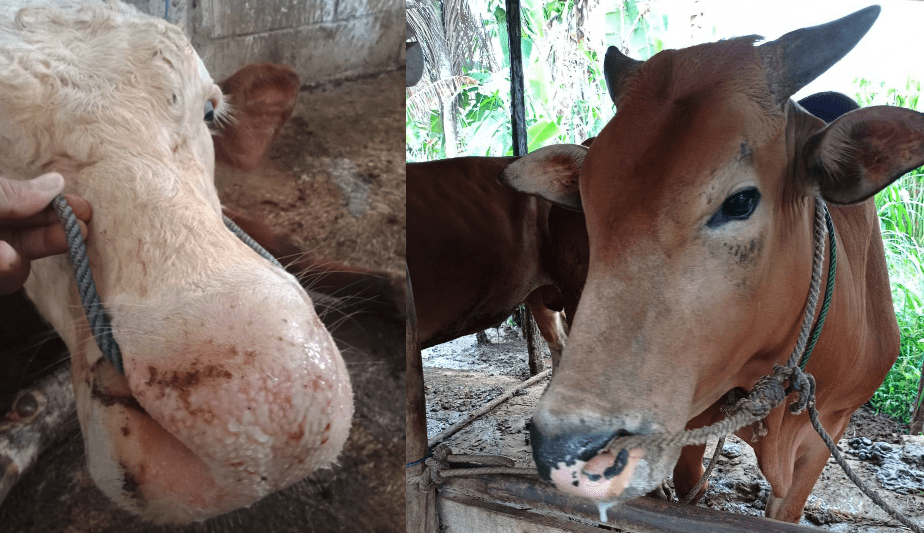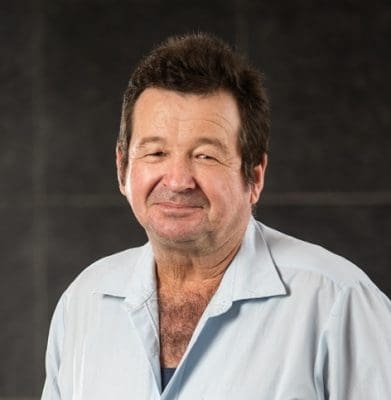WHILE the confirmation of Food and Mouth Disease in Indonesia has created urgency to ensure Australia’s livestock traceability systems are working as effectively as possible, it is also important that industry retain perspective and not panic about the nearby outbreak.
That is the view of Cattle Council of Australia president Markus Rathsmann, who spoke to Beef Central this morning about the industry’s position in response to the reported FMD outbreak in Indonesia on Friday.
An FMD outbreak in a neighbouring country is of great concern to Australia’s livestock sector from an animal welfare perspective and because, under current trade protocols, it would mean the immediate loss of access to premium export markets for our cattle, sheep, goat and buffalo industries.
No reason to panic
The return of FMD to Indonesia was a crucial wake-up call for Australia to ensure reforms of traceability systems are in place and working properly, Mr Rathsmann said.
But he also emphasised that it was important not to lose sight of the fact that Indonesia has had FMD before, and that Australia has helped Indonesia to eradicate FMD in the past and will actively support Indonesia to achieve the same result now.
“It is also in other Southeast Asian countries we trade with,” he said.
“We’re regularly told by biosecurity officials that smuggled-in meat is brought into Australia, fortunately we have a good border security system that detects it, and has been able to stop it coming in.
“While it is certainly of great concern that this outbreak has happened in Indonesia, we do have to remember that it does get to our shores, and it is just fortunate our biosecurity team is picking it up before it actually gets out.
“We need to use this as a wake-up call to say let’s get these reforms in place, let’s make sure our systems are up to date and working properly.
“There are things we need to do to ensure the investment the Minister for Agriculture (David Littleproud) has committed to biosecurity is used wisely and that we get a better system out of it.”
Mr Rathsmann said the Federal Government has recognised that work needs to be done in the traceability space, and the efforts of the department to help control neighbouring outbreaks should be congratulated.
Robust traceability needed for all livestock sectors
He said that all livestock producers “are in this together” and said it was important that all species of cloven hoof animals that can carry Foot and Mouth Disease are part of a robust traceability system in Australia.
This was recommended by a national livestock review of traceability systems by SAFEMEAT that was finalised and handed to Federal and State Governments and industry in 2020.
The review recommended, among other things, the ‘mandating’ of individual digital/electronic identification of livestock, and investment into a database capable of handling ‘all FMD susceptible livestock species’.
Individual electronic identification is mandatory for cattle in Australia.
In the sheep sector, Victoria is the only State to have introduced compulsory individual electronic identification, while other States still work on a paper-based system.
“While there has been some concern about the cost of an improved national system in bringing the other species on board, the cost of an FMD outbreak would far outweigh that,” Mr Rathsmann told Beef Central.
“We definitely need a harmonised national system.
“Certainly the SAFEMEAT review indicated that we would need to bring all cloven foot species within a robust traceability system, because we’re all in this together.”
What would happen in the event of an FMD outbreak in Australia?
Should FMD be confirmed in Australia, Mr Rathsmann said the first thing that would happen would be the imposition of a national livestock standstill.
“It would certainly be catastrophic to our markets and our reputation,” he said.
“The old data talks about a $51 billion impact, and that is old data. CCA been trying to get more recent data because cattle prices have certainly increased since 2013.
‘The old data talks about a $51 billion impact, and that is old data’
“Certainly we would lose our premium export markets (such as the US and Japan) and we would revert to a similar status to Indian buffalo meat”.
Pre-incursion work now vital
Mr Rathsmann said pre-incursion work was now “incredibly important”.
“There are things that we need to do in Australia to make sure that we’re ready and that means making sure our biosecurity systems, our traceability systems, are up to date, that we’re also reviewing our incursion and AHA manuals, which we’re doing for LSD and I am sure we will be doing for FMD.
“But I strongly believe we also need to be doing pre-incursion work and that is trying to mitigate risk, and that will mean dealing with creating buffers, doing exercises, drawing up more plans, dealing with the issues of feral animals, there is a lot of pre-incursion work that can be done to minimise risk.
“The other thing that is also important is that we do have good coordination between departments and effected stakeholders, and that is not always easy to achieve, because people do operate in silos, or they want to exclude other sectors.
“We need to make sure it is a coordinated response.
“The Government is certainly doing the right thing by trying to identify which strain is in Indonesia, that is the correct thing, how to deal with it with a vaccine.
“I am very hopeful that we will be provide this, given assistance, I am hopeful the outbreak can be contained because that is what Indonesia does, it creates a buffer between FMD in other countries and Australia.
“I guess it is why the Department was so keen to eradicate all those years ago, because it provides a buffer.”



May be time to consider an updated automated, real time, unlimited range, satellite based monitoring and traceability system to give the “canary in the coal mine” early detection ability for contact tracing. Deployment on a minimum representative 5% of every herd would be a good cost effective place to start.